Pong Kombat 2
In the summer of 1996, I decided to make a sequel to Pong Kombat. While that was over 26 years ago, the experience provided an immense amount of insight into game design and development.
Picture yourself living in Florida during the hot, muggy, summertime. You only have three months of school left. I had the opportunity to skip school on certain days of the week. I’d use that time to work on my game, Pong Kombat 2.
I vividly recall leaving the house and acting as if I was walking to the designated bus stop. I felt in my mind that I could see my mom, peering through the blinds, looking out the window and watching me to make sure I was going to the bus stop. I never looked back and said to myself “nah, that’s all in my head.” I walked to the right, down a road called “Middle Cross”. The bus stop was across the road.
Instead of continuing straight, I slowly walked up to a pale painted house with deep black trim. The second house on the right side. I silently cut through the yard and climbed a fence that lead straight to my backyard. I ducked down and crawled around the house and curled up next to the air conditioning unit. I pulled a pillow and a thick blue, fuzzy blanket out of my backpack that I had switched out of my school materials and got comfortable. I knew it would be about an hour before my parents left the house.
I woke from a light sleep about forty-five minutes later from the sound of a pair of tires going over a curb. Then a half second later, another pair. I hear the familiar sound of my mother’s van going into drive. She was the last one to leave the house, I was in the clear. I unwrapped myself from the comfy blanket and excitedly walked over to the window to my bedroom which I had already unlocked. I climbed through and left everything behind in my room.
I quickly ran through the house and into the office. I turned on the monitor. The computer was already powered up. As the CTR monitor warmed up and displayed the familair Windows 3.11 for Workgroups interface, my eyes went directly to the left and went down three icons. I put my mouse over the America Online icon. I double clicked the mouse. As I logged in, the sound of the modem fired off with loud, static noises, as if this was an old TV that cannot display a channel and mix in little beats of thousands of rubber bands firing off inside the computer. After about a minute, I was logged in. Now it was time to work on Pong Kombat 2 which was developed with Klik N’ Play.
Game Development
I would order a large pizza and drink loads of Sprite. Developing on a full stomach and sugar was my ritual to draw up all of these ideas: the story continuing from the original game, each of the new paddles, all the secrets, and the backgrounds of each character. Yes, Pong Kombat 2 is truly developed on a kitchen counter by a 16 year old.
At that time, I had a decent amount of tools. I used trueSpace 2 for all our animation, background art, and logos. I used Photoshop for text effects, clean up, and editing. For sound effects – the blood that shoots out of the paddles… those were all home made sounds: the blood effect was a ketchup bottle being squeezed with some pitch amplifying using Sound Forge.
That’s right, I was animating, programming, creating sound effects: the whole package. All in one hybrid that would skip school to write computer games. Those were the days!

Time to name the game
Honestly, I wrote this entire game without asking the original author’s permission. Well, keep in mind, I was only 16 years old at the time… I didn’t know any better but in the back of my mind, I thought it would be best if I did. All I remember is I typed out a letter, signed it, and snail mailed it to Stefan Gagne. I kept my fingers crossed that he’d say “yes” and I wouldn’t have to rename the game.
I got an e-mail a few weeks later. While he wasn’t entirely happy I didn’t ask him first… he was impressed that I wrote up a storyline and put forth all this work into making a sequel. He granted us a license to release Pong Kombat 2.
A quote from the Pong Kombat 2 instruction manual from Stefan Gagne (he wrote the manual for me!):
“Ryan had the balls to make the bloody thing without asking me. But instead of extreme violence on his personage, I looked at the product and realized, yeah, this is pretty much in line with the rampant silliness and parody of Pong Kombat. So, why not? Life is funny that way and these guys had the drive to do something special, something relatively unique and certainly creative. The universe deserved another Pong Kombat game.”
The Release
Life was good. I tested the game and added in little bells and whistles. (actually those bells and whistles were tagging on more and more megabytes). The release candidate was around 20mb, which was HUGE for an Indie, down-loadable game, back then. I contacted all my favorite Bulletin Board Systems (BBS) and all of them were happy to host the game. I also had contacted AOL’s download center. AOL also agreed to host the game too.
A week and almost 5 months after the release, I received thousands e-mails about the game: mostly good things. Some were bad saying my game “sucked”. That’s cool though, there was no way I could please everyone.
Play It Now
I play the game now and realize… wow, it’s not the greatest game. There is a mountain of aspects that damage the game. I’m sure I didn’t realize this at the time, I was having fun and it was my first game. Here is what I found:

- It’s very difficult unless you cheat: The first few levels are okay but once you get to stages that have 2-4 balls going at once and your opponent is shooting out stuff at you: there is too much going on to manage. I can feel that the upper stages were not tuned at all, they’re just rough and unforgiving. I must have just added in extra balls to make sure no one could beat it?
- The Specials Moves: PK2 is a parody off Mortal Kombat and Pong… but I know I can come up with a better way of designing the controls. Back then, I used PK1 as the example, which in turn used the Mortal Kombat controls. Those controls just don’t translate well on the keyboard as they do on a gamepad. So what ends up happening here is you have to print out the manual (same goes for the cheat guide) or write down the moves. I don’t mind games that provide a manual but that’s not the first thing I want to do with a new game… I’d rather play it first!
- The AI can cheese you: You might start noticing when you hit the ball, sometimes it goes directly to the opponent! The cool part is, your adversary slow down to return the ball back. Cheesy? Extra cheese! I don’t recall the intervals where the opponents fire their special weapons but it was increased as you progressed. That seems okay. The last boss, White Paddle spams you with his fireballs. That was actually intentional! The strategy to beat him is to keep hitting the ball and dodging the fireballs… White Paddle isn’t good at actually hitting the ball. Cool strategy but how many deaths (no continue option) could you chalk up before figuring that one out?
- Pong: the ball: The ball itself doesn’t follow proper physics, which leads to another problem: you’ll notice sometimes the ball will bounce from the bottom to the top of the screen over and over… and can be extremely annoying, especially when you slide your paddle and smack the ball. You expect the ball to move in that direction. I should have played around with the AI more and come up with some physics. Many times, the ball can get stuck behind your paddle or the opponent. Losing or winning a match like that feels so wrong. That could have been easily fixed.


- The menus: A game that uses the keyboard as the main controls… you should be able to select the menu options with the keyboard arrows… not just the mouse. Feels weird. The options screen sucks. There really isn’t any options. There are more options in the debug menu. However, the option screen follows Mortal Kombat option screens: lack of options unless you used codes to unlock more options.
- Way too many secrets: There are so many, many, many secrets in the game which in turn are extremely difficult if not impossible to access. The design document says 92 secrets. That is insane. Maybe I was thinking “replay” value? The best secret is the built in debug menu where you can simply choose a “super secret paddle” and run through the game. Or choose the “secret paddle menu” and pick “Awesome Paddle”, who takes up the entire screen and never misses a ball!
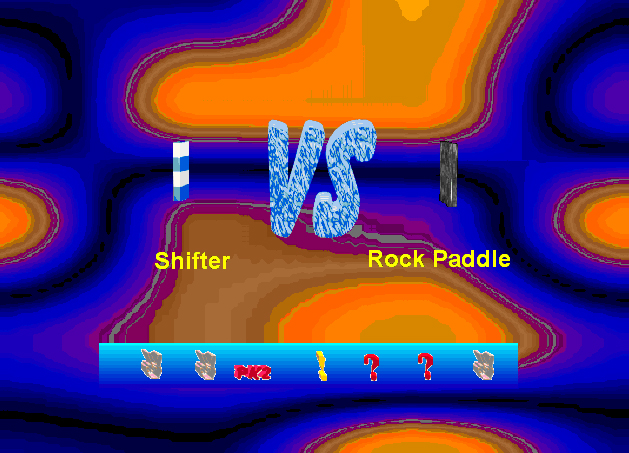
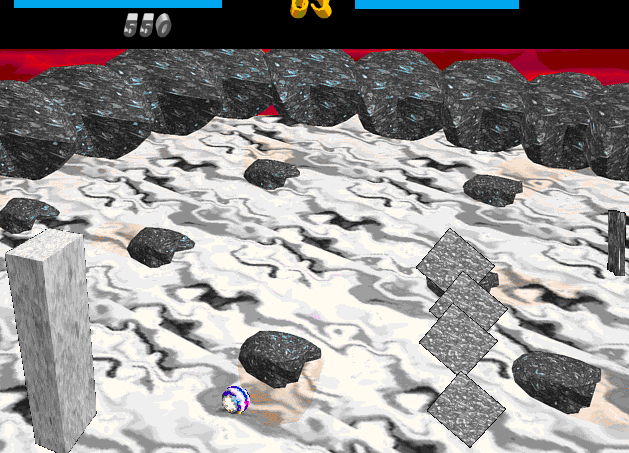
Fighting a secret paddle: a match against Wacky Paddle (the stars have to align perfectly to unlock Wacky) is nearly impossible. It’s almost equivalent to fighting Jade or Smoke in Mortal Kombat 2… except with even more downright cheap and punishing difficulty. I’m sure that was intended though.
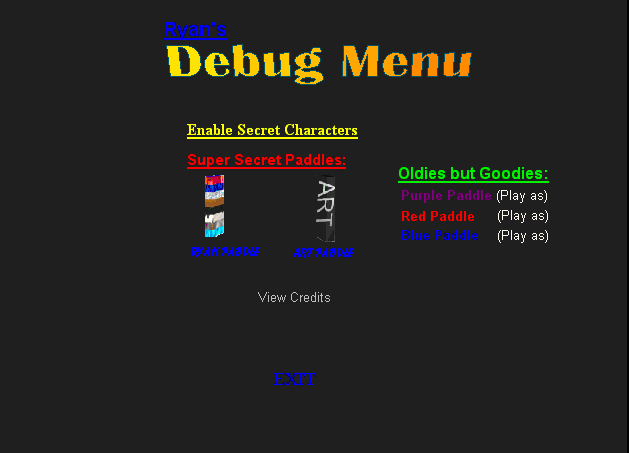

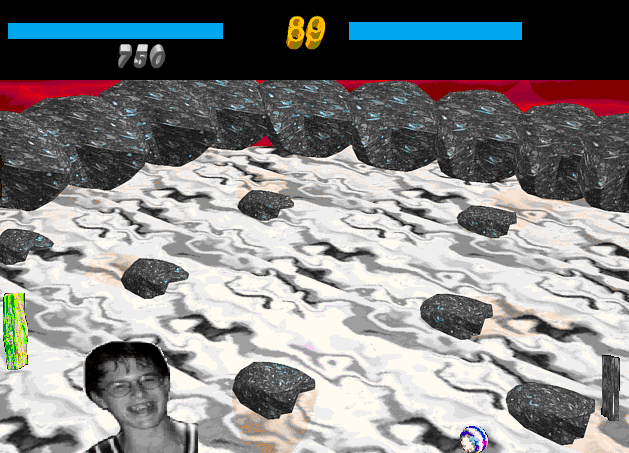
look at the code
Take a trip down memory lane with me as I look at what’s under the hood. The game was developed in Klik ‘N Player which is a visually scripting application. Eventually, the game was re-saved out with Click & Play (the predecessor). You can follow long with the source code
special attacks
The special attacks were coded in a weird way. Keep in mind, the special attacks are similar to Mortal Kombat where the player needs to key in commands like up, down, forward, forward, fire

The way it works here is whenever the player uses those inputs, I create a pixel off to the screen. Then I have another block of events that checks for the presence of those pixels off screen to form a combination of inputs. If those are within the area under a specific time, the player will shoot a special move, like a fireball. While I’m sure there is a much better way to handle this but at the time, I may have tried and this is what I came up with.

collisions
One of the strong points of Klik ‘N Play was the collision detection. It was decent in making responsive collisions and provided me a way to easily implement them. This block of events is part of the blood sprite creation - when the CPU player was hit by the player’s special attack, it would create blood sprites at those cordinates. Those sprites are assign pathing animation and are removed when the animation is complete.

computer intelligence
The AI of the computer controlled paddles is a gimmick. When the player hits the ball, it actually goes to the computer opponent! In the first few levels, it’s not as evident because the look at coordinates weren’t very exact, however at higher levels, it becomes apparent that the ball goes directly to the computer. If I ever decided to modify the game, this is the first piece that I would fix.

dismantle animations (fatalities)
I do remember drawing all of these animations. It was my first lesson in “getting in there” and get the job done. These were all created in the built-in animation editor and what I did was copy and paste the previous frame and modify it to the next animation state. This was my first real jump into pixel animation and since there were so many different paddles to choose from, there are so many fatalities. Going through all the animations, it looks like dismantles are only available for the core paddles and not the secret paddles. I’m sure by then, I figured it was too much work as the game has more secret paddles than base paddles!
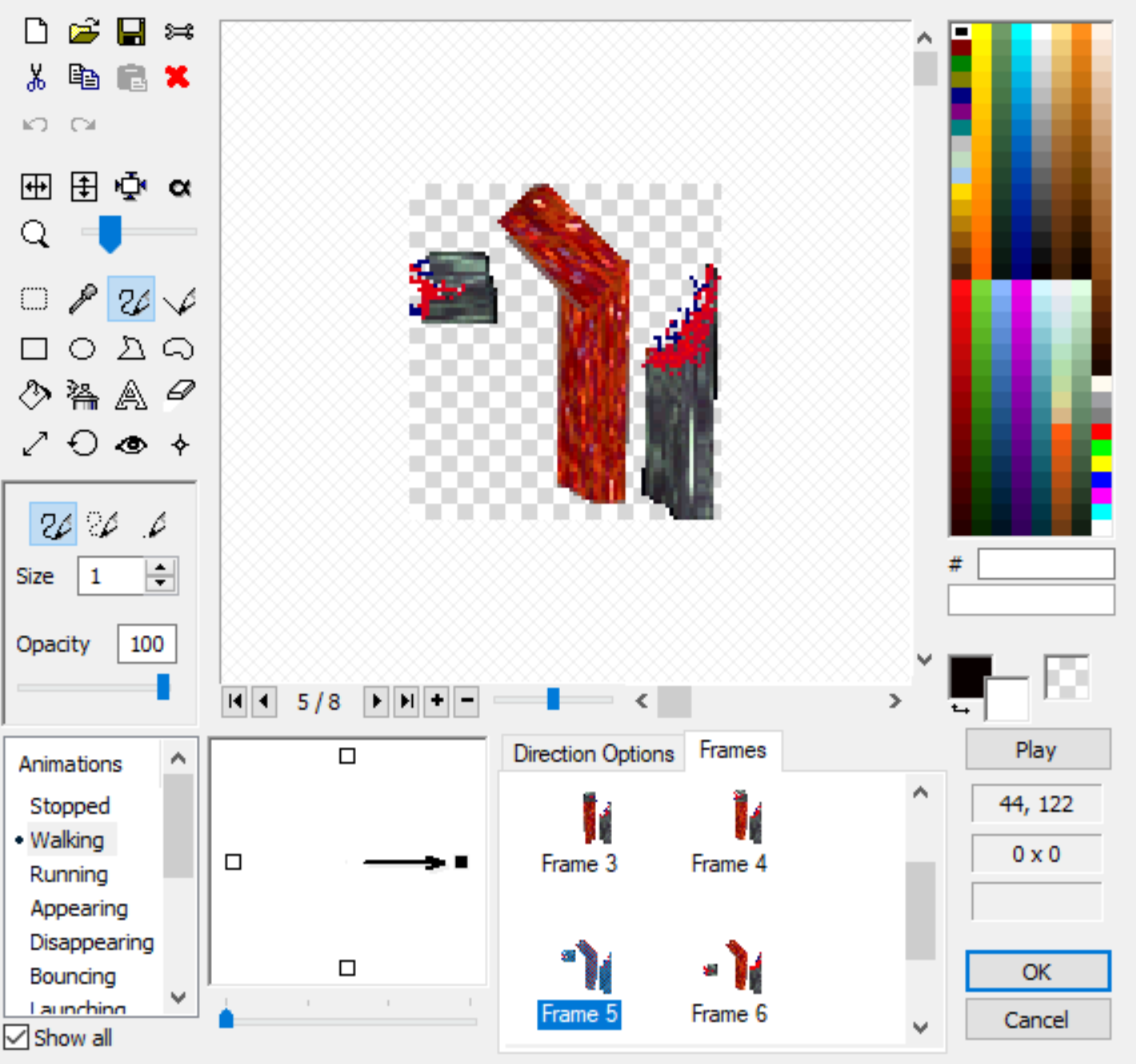
happy about the game
Even with all these call outs I’ve made on this game, I’m proud that my name is on it. I put a lot of hard work into the game. I didn’t have all the resources in the world but when I play it now, I can tell it was made with a lot of love.
Does this mean it’s time for a remake? Maybe when the time is right, I’ll sit down and rewrite the whole game but make it extremely fun like the original one was, keeping these points in mind.
You can play too!
Enjoyed This Article?
Unlock more with 3ee Games SpaceLab — your key to gaming greatness!
- Boost Your Game
Play games → earn coins → craft unique avatars in Britelite. No pay-to-win — just pure fun.
- Build Like a Pro
Game dev tutorials, API deep-dives, and AI training frameworks — code smarter, not harder.
- Rewards Just for You
Exclusive badges, quests, & surprises — because you deserve it.